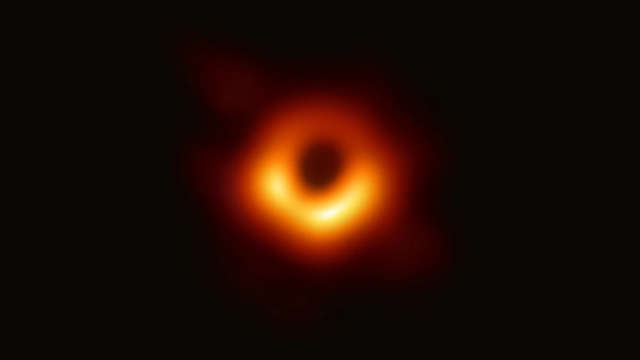The Breakthrough Prize Foundation has awarded $US21.6 ($32) million to winners of its 2020 Breakthrough Prizes, including a $US3 ($4) million prize to 347 members of the black hole-imaging Event Horizon Telescope team.
The Breakthrough Prize was funded by Russian-Israeli billionaire Yuri Milner and annually awards researchers in the life sciences, mathematics, and fundamental physics. It is considered the highest-paying science prize.
“To get an award like this signifies that the image is a touchstone for many,” Shep Doeleman, Harvard astronomer, told Gizmodo. “We’re looking forward to doing some more science with it, and reaching out to scientists in many fields.”
On April 10, 2019, scientists around the world announced that they’d linked eight radio telescope facilities on Earth to produce an image of a black hole.
Specifically, the picture showed a black hole 55 million light-years away, with a mass 6.5 billion times that of the Sun, at the centre of galaxy M87. Black holes are objects so massive that the way their gravity warps spacetime prevents light from escaping beyond a region called the event horizon.
The Event Horizon Telescope collaboration relied on a method called very long baseline interferometry, or VLBI. The bigger a telescope, the higher-resolution images it produces.
VLBI allows researchers to combine information from different telescopes to create higher-resolution images than the observatories could produce individually — essentially, turning many smaller telescopes into a single, much larger telescope. With the help of image-processing algorithms, the researchers created a picture of the shadow that the black hole left on the dust behind it.
Such a collaboration requires cross-border coordination and the efforts of hundreds of people, many of whom are early-career scientists and graduate students, Doeleman said. The prize money will be split among the many recipients — unlike the Nobel Prize, which only awards three scientists per prize, the Breakthrough Prize has no such limitation.
But the prize recognises more than just physics. Alex Eskin from the University of Chicago will take home the mathematics prize for his work with Iranian mathematician Maryam Mirzakhani for work on “the geometry of moduli spaces of Abelian differentials, including the proof of the magic wand theorem.”
According to a Breakthrough Prize Foundation press release, one of the work’s consequences is a demonstration that if a beam of light bounced around a mirrored room, for certain rooms with certain constrains, only a finite number of points would not be lit. Mirzakhani passed away in 2017 from breast cancer.
The four prizes for life sciences will go to scientists for a slew of discoveries. Jeffrey M. Friedman from the Rockefeller University and Howard Hughes Medical Institute earned an award for work on understanding the endocrine system that regulates how much and when we eat.
David Julius from the University of California, San Francisco was recognised for his work on cell signalling mechanisms for producing pain — for example, he found that chilli peppers and menthol produce reactions in the same receptors that react to hot and cold. Virginia Man-Yee Lee from the University of Pennsylvania won for her work on how protein behaviour relates to neurological diseases like Parkinson’s disease and amyotrophic lateral sclerosis.
F. Ulrich Hartl from the Max Planck Institute of Biochemistry and Arthur L. Horwich from the Yale School of Medicine and Howard Hughes Medical Institute were awarded for their work on how issues with protein folding can potentially lead to clumping that then causes cancer or other diseases.
A special Breakthrough Prize earlier this year awarded physicists Sergio Ferrara, Dan Freedman, and Peter van Nieuwenhuizen for the work on supergravity.
The honorees will receive their awards at a gala on November 3 at the NASA Ames Research Centre in Mountain View, California, which will be televised on National Geographic.
